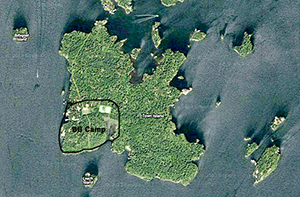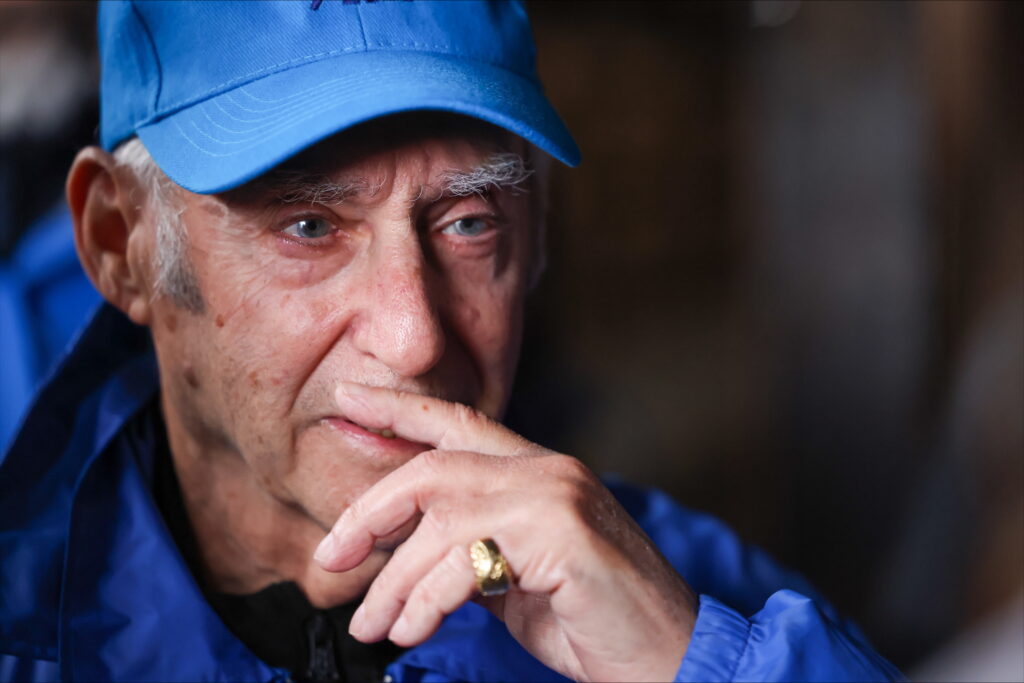Local News
Situation re possible sale of Town Island gets even murkier
 By BERNIE BELLAN
By BERNIE BELLAN
The situation regarding the possible sale of Town Island took a somewhat confusing twist these past two weeks when an online publication known as Kenora Online reported on Monday, January 13, that Kenora-Rainy River MPP Greg Rickford (who is also Ontario’s Northern Development Minister) said “he’s working with the City of Kenora on a possible Town Island land swap.”
However, a careful reading of what Rickford is actually quoted as having said might be interpreted as the exact opposite of what the Kenora Online wrote when it said Rickford is working on a “land swap” with Kenora. Here is what the article actually said:
“Kenora Rainy-River MPP and Northern Development Minister Greg Rickford says he’s working alongside staff with the City of Kenora to create an opportunity for more housing and land developments, and the plans include Kenora’s Town Island.”
“ ‘There’s discussions with the city and the Ministry of Natural Resources and Forestry on the opportunity. Now that we more clearly understand the city’s intentions are with it, I’ve assured the Mayor and Councillors (sic.) that we’re going to move forward and try to create an opportunity for them,’ said the minister.”
When I emailed Adam Smith, the City of Kenora’s Manager of Land Services, to ask him whether he could confirm that there have been negotiations with the Province of Ontario over Town Island, Smith categorically denied that there have been any negotiations with the Province of Ontario over anything to do with a land swap for Town Island.
Here’s what Smith wrote to me on January 17:
“Hi Bernie,
“The City has not had any discussions around a land swap with the Province (emphasis ours). I understand there is an article suggesting otherwise and I would suggest following up with the editor on the content.”
As a result of the possible misinterpretation of what Minister Rickford said to the reporter for Kenora Online, we have attempted to contact Minister Rickford himself to seek a clarification of what it is exactly that the Province of Ontario would like to do re Town Island.
In an email I sent to Minister Richford on January 17, I asked the minister the following:
“A careful reading of what you had to say could lead one to think that the province is interested in helping to ‘develop’ Town Island – which is the opposite of what those hoping for a land swap would want (which would be to see Town Island conserved in its natural state).
“Can you help me to understand just what it is that the province is interested in doing? Also, have there been negotiations with Kenora, but they don’t have anything to do with a land swap?”
In a previous article we noted that the City of Kenora had set January 31, 2020 as the deadline for receiving expressions of interest re Town Island. The clock is ticking. As we noted in our Short takes column of January 8, the Province of Ontario holds the key cards in this situation if it were to propose a land swap with Kenora for Town Island.
But, it is entirely possible that Kenora will want to move ahead with the sale of that part of Town Island which it still owns regardless of the position that the Province of Ontario might take. Thus, it is crucial to understand what Minister Rickford meant when he said that “There’s discussions with the city and the Ministry of Natural Resources and Forestry on the opportunity”.
What opportunity is he referring to? Is it the opportunity to “develop” Town Island, which is what he seems to be saying – and which would be devastating news for the Friends of Town Island and other groups that have rallied in support of halting the sale of Town Island or is it the opportunity to conserve Town Island as a “nature conservancy”, which is what the Friends of Town Island are proposing?
Certainly, ambiguity is what most politicians are very good at delivering when they offer any comments at all – if you can even get a politician to make a public comment. But, in the case of Minister Rickford, it doesn’t seem that he was being deliberately ambiguous. He certainly had something in mind when he said “he’s working alongside staff with the City of Kenora to create an opportunity for more housing and land developments, and the plans include Kenora’s Town Island.”
The problem here is that the reporter for Kenora Online didn’t follow up that remark with this sort of question: “Are you talking about developing Town Island?”
Instead, the reporter – and it would seem whoever was responsible for posting the story online, took Rickford to mean that he was interested in the idea of swapping Town Island, which explains why the headline for the story read: “Province, City working on Town Island land swap”.
Naturally, when I read that headline, my first reaction was: “Whew! Finally, the Province of Ontario is stepping in to help save Town Island from development”, which is something I suggested in our January 8 issue was the desired outcome for this vexing situation.
Thus, when I sent an email to Adam Smith of the City of Kenora, asking him whether he could confirm that there had been discussions with the Ontario provincial government about a land swap for Town Island, I was shocked to read that, not only was there nothing to announce regarding a deal to swap provincially owned land either in or adjacent to Kenora for Town Island – Smith denied there had even been any negotiations on the matter.
But, it took three days for Smith to respond to my query about a land swap. Once I received his response late Friday afternoon, I immediately contacted the reporter for Kenora Online to ask him whether he had recorded anything else Minister Rickford might have said that would have justified going forward with a headline that Ontario and Kenora were working on a land swap for Town Island?
Here’s what the reporter wrote back to me in an email: “That is the direct quote I received from Minister Rickford after speaking with him in person in regards to the Town Island land swap (emphasis ours). I’d encourage you to contact his office for more.”
So, it would seem clear that the reporter for Kenora Online was asking about a land swap when he spoke with Minister Rickford. And, I can well understand the reporter’s interpreting the minister’s response to mean that the Province of Ontario was indeed interested in a land swap, but this wouldn’t be the first time that a reporter might have rushed to judgement without asking a more specific question that would have removed any doubt as to what the minister meant.
Why all this concern about Town Island, you might be wondering? Well, if over 10,000 individuals have taken the time to sign a petition asking the City of Kenora not to sell Town Island, it’s pretty clear that this is an issue that resonates with a great many people.
And, with the clock ticking as we move ever closer to the possibility that Kenora may indeed sell off the rest of Town Island to a private developer (although there is nothing to forestall an organization or individual from coming forward with an offer that would see Town Island safeguarded from private development), it’s awfully important to remove any ambiguity as to what the Province of Ontario is prepared to do to protect Town Island – if anything at all.
I’m just afraid that the Kenora Online might have got it all wrong though – and, rather than wanting to preserve Town Island, the Minister of Northern Development for Ontario actually wants to develop Town Island. After all, his title contains the word “development”, not preservation.
And, given the response that I received from Adam Smith of Kenora in which he said there have not been any negotiations at all with the Province of Ontario over a land swap for Town Island, it doesn’t appear that the Province of Ontario will do anything to stop the sale of Town Island to private developers. Just the opposite seems the most logical interpretation of what Minister Rickford had to say: He wants to “develop” Town Island.
Post script: We have to attempted to reach Minister Rickford several times since this article first appeared in our print edition, including through his government office in Toronto and his constituency office in Rainy River – to clarify just what is the Government of Ontario’s intent with respect to Town Island, but have not heard back from anyone associated with the Ontario government.
This is one case though, where I hope I’m proved absolutely wrong though – and the Ontario government is sincerely interested in doing a deal with Kenora.
Local News
Further to the Simkin Centre’s financial situation

By BERNIE BELLAN A while back I published an article about the deficit situation at the Simkin Centre. (You can read it at “Simkin Centre deficit situation.“) I was prompted to write that particular article after reading a piece written by Free Press Faith writer John Longhurst in the August 5 issue of the Free Press about the dire situation personal care homes in Winnipeg are in when it comes to trying to provide their residents with decent food.
Yet, Longhurst made one very serious mistake in his article when he wrote that the “provincial government, through the Winnipeg Regional Health Authority, has not increased the amount of funding it provides for care-home residents in Manitoba since 2009.”
In fact, the WRHA has given annual increases to personal care homes, but its allocations are not broken down by categories, such as food or salaries. As a spokesperson for the WRHA explained to me in an email: “PCHs receive per diem global operating funding based on the number of licensed beds they operate. This funding model is designed to support the full range of operating costs associated with resident care, including staffing, food services, utilities, building operations, and other day-to-day expenses.”
Now, one can make a perfectly valid argument that the level of funding from the WRHA has not kept up with inflation, especially inflation in food costs, but the Simkin Centre is in an even more precarious position because of the skyrocketing cost of kosher food.
“In recent years,” according to an article on the internet, “the cost of kosher food has increased significantly, often outpacing general food inflation due to unique supply chain pressures and specialized production requirements.”
Yet, when I asked Laurie Cerqueti how much maintaining a kosher facility has cost the Simkin Centre, as I noted in my previous article about the deficit situation at Simkin, she responded: “approximately $300,000 of our deficit was due to food services. I do not have a specific number as far as how much of the deficit is a result of kosher food…So really this is not a kosher food issue as much is it is an inflation and funding issue.”
One reader, however, after having read my article about the deficit situation at Simkin, had this to say: “In John Longhurst’s article on Aug 5, 2025 in the Free Press, Laurie (Cerqueti) was quoted as saying that the annual kosher meal costs at Simkin were $6070 per resident. At Bethania nursing home in 2023, the non-kosher meal costs in 2023 were quoted as $4056 per resident per year. Even allowing for a 15% increase for inflation over 2 years, the non-kosher food costs there would be $4664.40 or 24% lower than Simkin’s annual current kosher food costs. If Simkin served non-kosher food to 150 of its 200 residents and kosher food to half of its Jewish residents who wish to keep kosher, by my calculation it would save approximately $200,000/year. If all of Simkin’s Jewish residents wished to keep kosher, the annual savings would be slightly less at $141,000.”
But – let’s be honest: Even though many Jewish nursing homes in the US have adopted exactly that model of food service – where kosher food is available to those residents who would want it, otherwise the food served would be nonkosher, it appears that keeping Simkin kosher – even though 45% of its residents aren’t even Jewish – is a “sacred cow” (pun intended.)
So, if Simkin must remain kosher – even though maintaining it as a kosher facility is only adding to its accumulated deficit situation – which currently stands at $779,426 as of March 31, 2025,I wondered whether there were some other ways Simkin could address its deficit while still remaining kosher.
In response to my asking her how Simkin proposes to deal with its deficit situation, Laurie Cerqueti wrote: “There are other homes in worse financial position than us. There are 2 homes I am aware of that are in the process of handing over the keys to the WRHA as they are no longer financially sustainable.”
I wondered though, whether the Simkin Centre Foundation, which is managed by the Jewish Foundation of Manitoba might not be able to help the Simkin Centre reduce its deficit. According to the Jewish Foundation’s 2024 annual report, The Saul and Claribel Simkin Centre Foundation, which is managed by the Jewish Foundation, had a total value of $11,017,635.
The Jewish Foundation did distribute $565,078 to the Simkin Centre in 2024, but even so, I wondered whether it might be able to distribute more.
According to John Diamond, CEO of the Jewish Foundation, however, the bylaws of the Foundation dictate that no more than 5% of the value of a particular fund be distributed in any one year. There is one distinguishing characteristic about the Saul and Claribel Simkin Centre Foundation, in that a portion of their fund is “encroachable.” The encroachable capital is not owned by JFM. It is held in trust by JFM but is beneficially owned by Simkin, similar to a “bank deposit”. While held by the JFM, these funds are included in the calculation of Simkin’s annual distribution.
I asked John Diamond whether any consideration had been given to increasing the distribution that the Jewish Foundation could make to the Simkin Centre above the 5% limit that would normally apply to a particular fund under the Foundation’s management.
Here is what John wrote in response: “The Simkin does have an encroachable fund. That means that at their request, they can encroach on the capital of that fund only (with restrictions). This encroachment is not an increased distribution; rather, it represents a return of capital that also negatively affects the endowment’s future distributions.
”It is strongly recommended that encroachable funds not be used for operating expenses. If you encroach and spend the capital, the organization will receive fewer distribution dollars in the next year and every year as the capital base erodes. Therefore, the intent of encroachable funds is for capital projects, not recurring expenses.”
I asked Laurie Cerqueti whether there might be some consideration given to asking for an “encroachment” into the capital within the Saul and Claribel Simkin Centre Foundation?
She responded: “We are not in a position where we are needing to dip into the encroachable part of our endowment fund. Both of our Boards (the Simkin Centre board and the Saul and Claribel Simkin Centre Foundation board) are aware of our financial situation and we are all working together to move forward in a sustainable way.”
At the same time though, I wondered where donations to the Simkin Centre end up? Do they all end up in the Simkin Centre Foundation, for instance, I asked Laurie Cerqueti on December 15.
Her response back then was: “All donations go through our Foundation.”
I was somewhat surprised to read that answer, so I asked a follow-up question for clarification: “Do all donations made to the Simkin Centre end up in the Simkin Centre Foundation at the Jewish Foundation?”
The response this time was: “No they do not.”
So, I asked: “So, how do you decide which donations end up at the Foundation? Is there a formula?”
Laurie’s response was: “We have a mechanism in place for this and it is an internal matter.”
Finally, I asked how then, the Simkin Centre was financing its accumulated deficit? Was it through a “line of credit with a bank?” I wondered.
To date, I have yet to receive a response to that question. I admit that I am puzzled that a personal care home which has a sizeable foundation supporting it would not want to dip into the capital of that foundation when it is facing a financial predicament. Yes, I can see wanting the value of the foundation to grow – but that’s for the future. I don’t know whether I’d call a $779,425 deficit a crisis; that’s for others to determine, but it seems pretty serious to me.
One area that I didn’t even touch upon in this article, though – and it’s something I’ve written about time and time again, is the quality of the food at the Simkin Centre.
To end this, I’ll refer to a quote Laurie Cerqueti gave to John Longhurst when he wrote his article about the problems personal care homes in Winnipeg are facing: “When it comes to her food budget, ‘we can’t keep making the same number of bricks with less straw.’ “
Local News
Exclusive: Security Enhancement Fund to be announced by Province in coming days

By NOAH STRAUSS The province is set to announce a new program called the Security Enhancement Fund, which
will provide funding to religious and faith groups to improve security at institutions such as
synagogues and mosques. In an exclusive interview, Minister of Justice Matt Wiebe outlined the
plan and detailed what the province has already done to help protect Jewish Manitobans.
“What we want to do is to be able to provide the community with the kind of tools that they need
to stay safe and to ensure that everyone in the community feels safe,” said Wiebe.
The fund will provide a missing link between government and religious communities, and
communities will now be able to make their own choices without money being a big restraint.
Essentially, the power will be in the hands of community leaders and not government officials.
The minister noted that the new partnerships will provide the province a better understanding of
the needs of every community. Rather than the province making the choices, they are
essentially giving a voice to each community. The grants, totalling $1 million, will provide funds to enhance security at facilities like synagogues.
The Jewish Post reached out to Dr. Rena Secter Elbaze, executive director of Congregation
Shaarey Zedek. “It’s important that the government show us that they’re taking security seriously and stepping up to the plate to make this offer. We will absolutely be applying for grant money,” she said. Elbaze also wants to know whether or not the government will cover the costs of things the synagogue has already spent money on. She noted that the province has, in the past, made grants available to have security guards present.
When speaking about what the Justice Ministry has already done to protect Jewish Manitobans,
Wiebe brought up the new special prosecutor that is focusing on hate crimes. Wiebe said the
special prosecutor works closely with the Winnipeg Police Service “to support investigations and
prosecute hate crimes. Wiebe also went on to say how the Department of Education has been helping to fight antisemitism. “The creation of the Holocaust education curriculum is an important step in the right direction,” he said. When asked about Oliver Didtger Ederhof, the individual charged with 14 counts of mischief including vandalism of Shaarey Zedek, Wiebe said decisions like bail and police undertakings are decisions that are in part made by the federal government through the criminal code and policies. “We’re going to continue to advocate for stricter bail reform at the federal level…. I’ve been very clear, we issued clarified directives around bail to our Crown prosecutors.”
The full announcement from the province is expected in the coming days.
Local News
March of the Living 2023 participants form Taste of Hope project to help honour the memory of Holocaust survivor Alex Buckman

By BERNIE BELLAN The March of the Living is an annual two-week international educational program that brings thousands of students and adults to Poland and Israel to study the Holocaust, Jewish history, and the rise of the State of Israel. Founded in 1988, it features a 3-kilometer silent walk from Auschwitz to Birkenau on Yom HaShoah (Holocaust Remembrance Day).
Attendees on the march are accompanied by adults, some of whom themselves have been Holocaust survivors.
Following the week in Poland, participants travel to Israel to observe Yom HaZikaron (Israel’s Memorial Day) and celebrate Yom HaAtzmaut (Israel’s Independence Day), marking a journey from darkness to life.
For many years the coordinator of the march in Winnipeg was Roberta Malam, working on behalf of the Jewish Federation of Winnipeg. More recently Abby Flackman filled that role, and now the person in charge is Lindsey Kerr.
Since its inception 37 years ago the March of the Living has become a rite of passage for many young Winnipeg Jews who have been able to participate as an organized group from Winnipeg and combine visits to the death camp at Auschwitz-Birkenau in Poland with the subsequent trip to Israel.
Then – the Covid pandemic hit – in 2020, and the March of the Living was put on hold for two years – in 2020 and 2021.
In 2022, the March of the Living resumed, but there was no organized contingent from Winnipeg participating. (There may have been some Winnipeggers who did go on the march that year, but if there were any they would have been part of a general Canadian group since there was no Winnipeg coordinator that year.)
In 2023, however, once again a very large contingent of young Canadian Jews – 51 altogether, of whom approximately two-thirds were from Winnipeg, went on that year’s March of the Living. That particular march was memorable for many reasons, including the fact it was the last full march since 2019 and was to remain the last march to have an organized Winnipeg contingent in the past six years as the years 2024 and 2025 were interrupted by the war in Gaza. (There were smaller marches held in 2024 and 2025, but again there was no organized contingent from Winnipeg.)
Recently, we were contacted by one of the participants of that 2023 march, Ethan Levene, who asked us whether we’d be interested in running what turned out be a very poignant story about one particular aspect of that 2023 March of the Living.
Here is what Ethan wrote:
“In April 2023, the Coast to Coast Canadian delegation of March of the Living was privileged to travel with Holocaust survivor Alex Buckman (z”l). March of the Living is a Holocaust education trip that allows participants to visit and bear witness to the sites of the Holocaust. Unfortunately, while sharing his story in Poland, Alex passed away. However, the impact he left on us students was immeasurable.

“While speaking to us in Warsaw, Alex told us the story of his Aunt Becky’s gâteau à l’orange (orange cake). While in Ravensbruck concentration camp, his aunt managed to write down this recipe. After his parents’ murder, his Aunt Becky went on to raise Alex after surviving. In addition to sharing his story, Alex tasked us with baking the cake with family and friends.
“Out of this, a group of alumni from our trip have created this project: ‘A Taste of Hope.’ On February 1st, university students from over 5 universities across Canada will come together to bake the gâteau à l’orange and hear Alex’s story. Proceeds from the event and this fundraising page will support the World Federation of Jewish Holocaust Survivors and Descendants. Alex was heavily involved with this organization, whose mission is to both create community for Holocaust survivors and their descendants and educate about the Holocaust to help fight against antisemitism and all forms of bigotry and hate.
“Here is information from our fundraising page for the event – ‘A Taste of Hope’: Fundraising for A Taste of Hope.
Ethan added that “it’s completely student led, all by alumni from our 2023 trip attending university at these various locations across Canada; Winnipeg, London, Kingston, Montreal.”
He also added: “Follow us on instagram@tastehope.“
Here is a link to a CBC story about Alex Buckman: Alex Buckman story
In a subsequent email Ethan gave the names of Winnipeggers who are involved in A Taste of Hope: Ethan Levene (studies at McGill), Zahra Slutchuk, Alex Stoller (studies at Queens), Coby Samphir, Izzy Silver (studies at Waterloo).
He also added names of others who are involved in the project: Jessie Ages, Anneke Goodwin, Lilah Silver, Ella Pertman, Ellie Vogel, and Talia Cherun.
To find out more about March of the Living in Winnipeg go to: March of the Living


